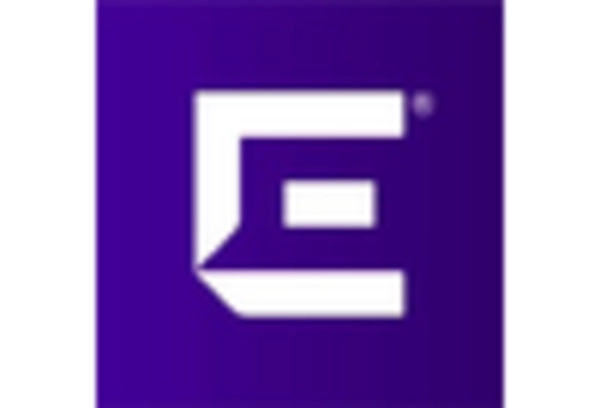Rising Adoption of IoT Devices
The proliferation of Internet of Things (IoT) devices is a pivotal driver for the Wireless LAN Controller Market. As organizations increasingly integrate IoT solutions into their operations, the demand for robust wireless networks escalates. This trend necessitates advanced wireless LAN controllers capable of managing numerous connected devices efficiently. According to recent data, the number of IoT devices is projected to reach 30 billion by 2030, which underscores the urgency for scalable and reliable wireless infrastructure. Consequently, businesses are investing in wireless LAN controllers to ensure seamless connectivity and optimal performance, thereby propelling market growth.
Integration of Advanced Analytics
The integration of advanced analytics into wireless network management is a notable driver for the Wireless LAN Controller Market. Organizations are increasingly leveraging data analytics to optimize network performance and user experience. Wireless LAN controllers equipped with analytics capabilities enable real-time monitoring and insights, facilitating proactive management of network resources. Recent studies indicate that companies utilizing analytics in their network operations experience a 20% improvement in efficiency. This trend highlights the growing importance of advanced analytics in wireless LAN controllers, thereby fostering market expansion.
Shift Towards Remote Work Solutions
The shift towards remote work solutions has emerged as a crucial driver for the Wireless LAN Controller Market. Organizations are increasingly adopting flexible work arrangements, which necessitate reliable and secure wireless connectivity for remote employees. Wireless LAN controllers play a vital role in ensuring that remote workers have consistent access to corporate networks, thereby enhancing productivity. Recent statistics suggest that approximately 70% of the workforce is expected to work remotely at least part-time by 2025. This trend underscores the importance of investing in wireless LAN controllers to support a distributed workforce, thereby stimulating market demand.
Demand for Enhanced Network Security
The escalating demand for enhanced network security is a significant driver for the Wireless LAN Controller Market. As cyber threats become more sophisticated, organizations are prioritizing the implementation of secure wireless networks. Wireless LAN controllers offer advanced security features, such as encryption and intrusion detection, which are essential for protecting sensitive data. Market analysis reveals that The Wireless LAN Controller is projected to reach $345 billion by 2026, indicating a strong focus on security solutions. This trend compels organizations to invest in wireless LAN controllers that provide robust security measures, thereby driving market growth.
Growing Need for Network Scalability
The Wireless LAN Controller Market is significantly influenced by the growing need for network scalability. As enterprises expand, their network requirements evolve, necessitating solutions that can accommodate increased traffic and device connections. Wireless LAN controllers provide centralized management, enabling organizations to scale their networks without compromising performance. Market data indicates that the demand for scalable network solutions is expected to grow at a compound annual growth rate of 12% over the next five years. This trend highlights the importance of wireless LAN controllers in facilitating seamless network expansion, thus driving market growth.

















Leave a Comment